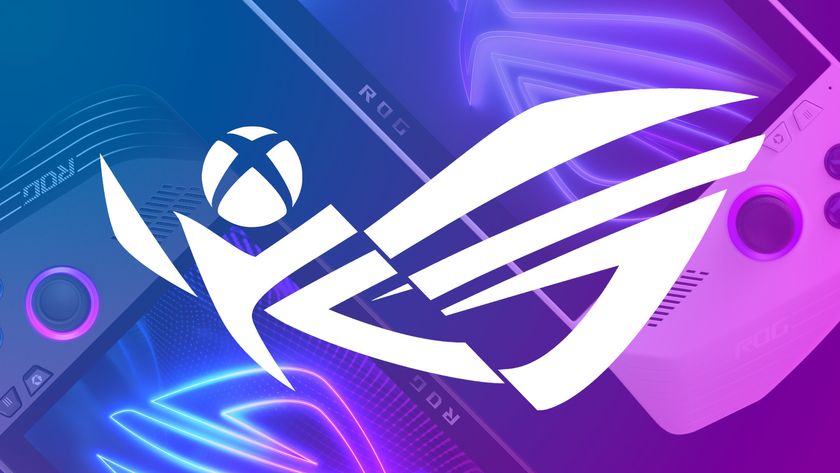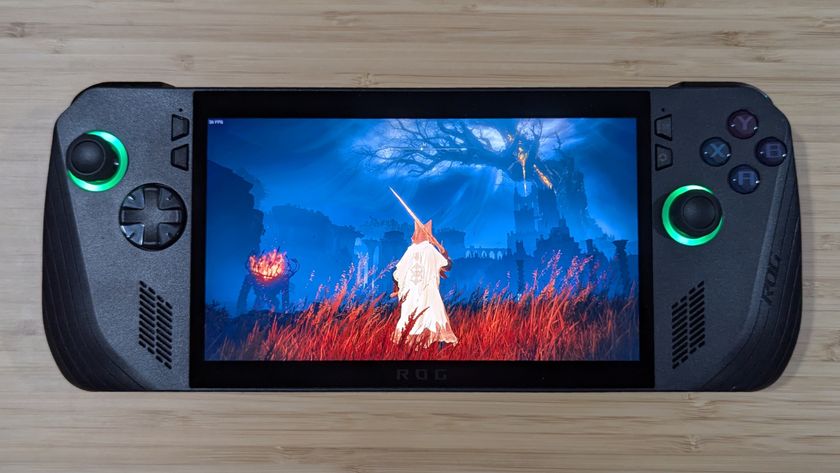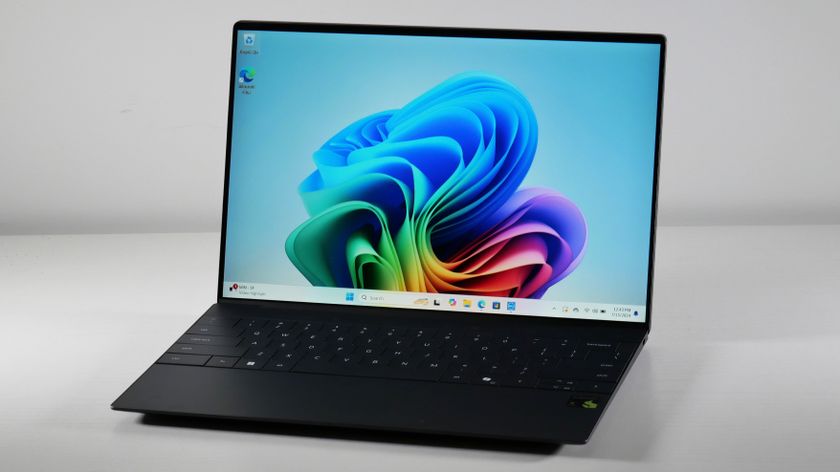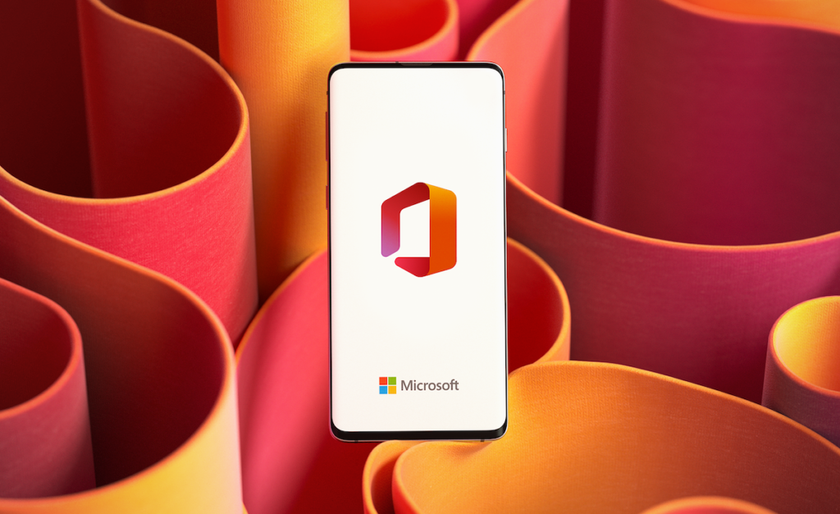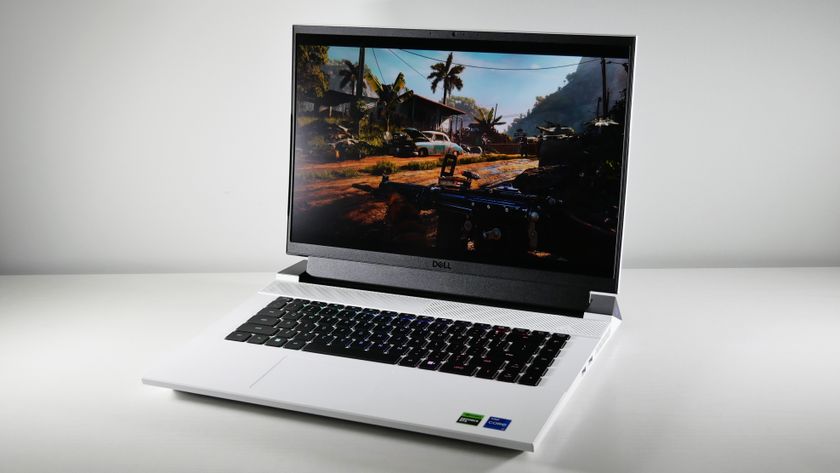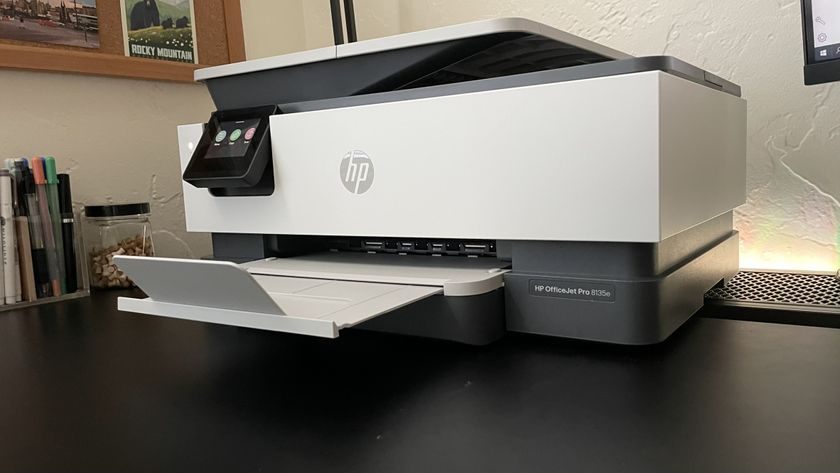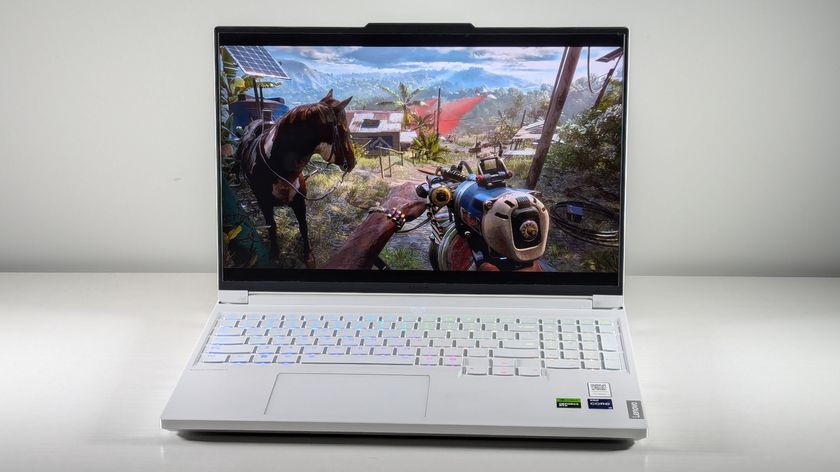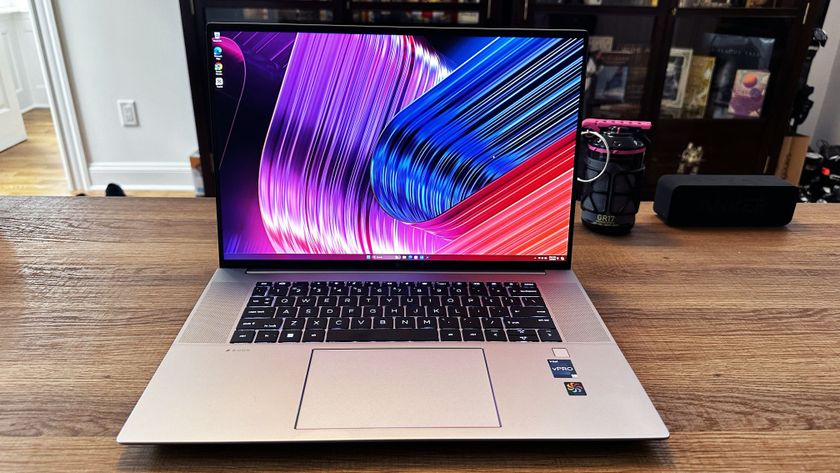Best eGPUs: Add Graphics Power to Your Laptop
The best eGPUs for gaming on ultraportables
Ultraportable laptops are great when you need to put together a presentation for work, crunch some numbers or binge-watch your favorite Netflix shows. But graphically taxing games and support for VR headsets are out of reach. Or are they?
If you have a laptop with a Thunderbolt 3 port (or one of the new Thunderbolt 4 ports), there's a good chance that you can attach an external GPU (eGPU), providing all the benefits of an Nvidia or AMD graphics card, without carrying around a bulky notebook. There are even a couple of external boxes that play nice with MacBooks, so Mac lovers can also know the joys of super-high-res PC gaming.
To help you find the best eGPU, we put some of the most popular models through rigorous testing. Stay tuned for our RTX testing and our upcoming review of the latest Razer Core X Chroma. And in case you're in the market for a new system, check out our best laptops, best gaming laptops and best sub-$1,000 gaming laptops roundups.
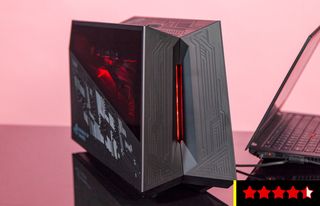
Asus ROG XG Station 2
The only thing bigger than the Asus ROG XG Station 2's size and outlandish design is its price tag. However, once you get past the initial sticker shock and the box's out-of-this-world looks, you get an eGPU that's easy to open with enough ports to support a sizable gaming battle station.
Design: Asus sure knows how to put the "show" in showpiece. The front, top and right black plastic sides of the ROG XG Station 2 are stamped with thick lines meant to mimic circuitry gone wild. It gives the box a funky, futuristic chic that I can't get enough of. But the show really begins once a GPU is added and the box is connected to a laptop. The front-mounted red Tesla coil springs to life, while the interior backlighting illuminates the box with pulsating red light. At 8.3 x 6.3 x 3.7 inches and 5.2 pounds, it's one of the bigger eGPUs we’ve seen, so you'll want to have enough space to fit it on your desk.
Ports: Ports include four USB 3.0 ports, one USB 3.0 Type-B port, a Gigabit Ethernet, a Thunderbolt 3 and a power port all mounted in the rear. Throw in a powerful-enough GPU and you can support either an Oculus Rift or HTC Vive.
Accessibility: The ROG XG Station 2 is one of the easiest eGPUs to open. Slide the long button on the top right toward the back of the box, and both sides fall away, opening like some techno-fauna. From there, you just pop the card in, close the box and you're ready to rock.
Compatibility: The Lenovo ThinkPad T470 recognized the Asus immediately. It was also one of the only systems to work with the Razer Blade Stealth, and was able to charge both systems.
Value: At $549.99, the Asus ROG XG Station 2 is one of the most expensive eGPUs, second to the $589.99 Aorus GTX 1070 Gaming Box. However, the Aorus comes with a built-in GTX 1070 GPU; supplying the same card for the ROG XG Station 2 cost us $419.99, which brings the total price of the Asus to $969.98.
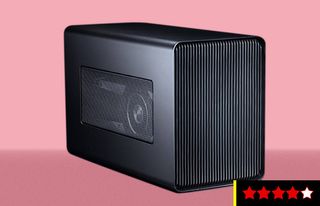
Never one to rest on its laurels, Razer went back to the lab with the Core and came back with something bigger, more streamlined and affordable. The $299 Razer Core X offers a bigger chassis, perfect for installing massive GPUs like the Nvidia GeForce GTX Titan V while eliminating the USB and Ethernet ports. The Core X will be one of Razer's first eGPUs to play nice with Macs. However, fans of Razer's Chroma lighting will be disappointed as the Core X lacks the colorful customization feature.
Design:
If you're looking to supersize your external graphics enclosure, the Core X is for you. The Core X eclipses both at 14.3 pounds and 14.7 x 9.1 x 6.6 inches -- all the better to fit a massive Nvidia GeForce Titan V , my dears. But size isn't the only change you'll see. Razer has ditched the quartet of USB 3.0 ports, as well as Ethernet along the rear of the device, leaving only the Thunderbolt 3 port and power input. It's still made from jet-black CNC aluminum with the large, silver, tri-headed snake emblem on the left and a large peekaboo grate on the right to let you look at your GPU.
Ports:
The few ports the Core X has can be found in the back of the Core X and consist of a Thunderbolt 3 port and the power input. Compatibility: Like the Core V2, the Core X works with dual and quad-lane Thunderbolt 3 notebooks. It will also be one of Razer's first enclosures to support MacBooks. Value: At $299, the Core X is Razer's most affordable eGPU. For the price, you still get Razer's premium build quality along with a space large enough to fit some of the most powerful graphics cards on the market. However, the Core X lacks ports for USB and Ethernet as well as the Chroma lighting, so gamers looking to create a large gaming station will be left wanting.
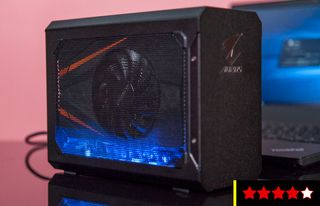
Aorus GTX 1070 Gaming Box
The Gaming Box's comes pre-installed with a GPU, you don't have to worry about shelling out even more money for a graphics card. That makes it the cheapest option in the long run. But since you lose the ability to swap out GPUs, you might find yourself purchasing another Gaming Box in a few years when the GTX 1070 can't cut the mustard.
Design: The Aorus GTX 1070 Gaming Box is hands-down the most adorable eGPU. Measuring 6.4 x 8.4 x 3.8 inches and weighing 5.2 pounds, it's the smallest box we tested. It's the perfect size for those with little space to spare. Similar to Aorus laptops like the X7 v6, the Gaming Box is swathed in matte black aluminum. The silver chrome avian logo gleams on the top front of the device. A pair of large grates sit along both sides of the system allowing for airflow and a nice view of the GTX 1070 Mini GPU inside. And if you want to game on the go, the Aorus also comes with a little carrying case for stow-and-go convenience.
Ports: Despite its diminutive size, the Gaming Box comes with plenty of ports. There are three USB 3.0 ports, an orange quick-charge USB 3.0 port, an HDMI, a DisplayPort, a pair of DVI-2 ports, a Thunderbolt 3 and the power jack.
Accessibility: Unlike other eGPUs, the Gaming Box comes with the GTX 1070 Mini GPU installed. The box is sealed, so you don't have the luxury of switching out the graphics card at a later date.
Compatibility: Though we tried using the box with the MacBook Pro 13 and the Blade Stealth, the ThinkPad T470 was the only system that recognized the Aorus.
Value: When you first see the Gaming Box's $589.99 price, it looks like it's the most expensive eGPU out there. However, since it comes pre-installed with a GPU, you don't have to worry about shelling out even more money for a graphics card. That makes it the cheapest option in the long run. But since you lose the ability to swap out GPUs, you might find yourself purchasing another Gaming Box in a few years when the GTX 1070 can't cut the mustard.

Sonnet EGFX Breakaway Box
A no-frills purchase, the Sonnet EFFX Breakaway Box offers little in the way of ports and design. However, it's easy to get into and install the graphics card, and this box could be fine for people who just want to game on their laptop.
Design: Other than the rounded edges along the front and a blue backlit squiggle meant to resemble an "S," the Sonnet EGFX Breakaway Box won't turn heads. The 13.4 x 8 x 7.3-inch, 7.1 pound box is rather squat and wide and sure to take up a sizable space on your desk. Two metal lattices on the sides of the device make sure the GPU receives proper airflow.
Ports: Like the AKiTiO Node, the Breakaway Box only offers a Thunderbolt 3 port and a port for the AC power cord.
Accessibility:xGetting into the Breakaway Box involves removing two black bolts on the back of the box and lifting off the top. Installing the GPU is as simple as snapping it in.
Compatibility: Despite multiple attempts, we could only get the Breakaway Box to work with the ThinkPad T470. However, we had to install a driver to get the system to recognize the eGPU.
Value: At $258.99, the Breakaway Box is the cheapest eGPU we've tested, and with the plain-Jane design and lack of ports it shows. Throw in our $419.99 GPU, and you've got a grand total of $679.98.

AKiTiO Node
The AKiTiO Node is the embodiment of getting what you pay for. The Node offers a rather boring design and unintuitive accessibility. The eGPU barely has any ports, and it was compatible with only one out of two Windows laptops we tried. Which when you think about it, puts it on a par with the minimalist ultraportables it's trying to augment.
Design: There are sleek black boxes like the Razer Core, and then there's the AKiTiO Node. Where the Blade exudes sexiness, the Node screams afterthought. A silver logo embellished with a bootleg version of the Marvel Avenger's “A” on the front of the system is the black aluminum box's only bling. Whatever card you place in the Node will have plenty of air, thanks to grates on the front and right side of the box. A spider web cut out toward the left rear delivers air to the power system. Measuring 16.9 x 8.9 x 5.7 inches and weighing 10.8 pounds, the Node is the longest eGPU we tested, so you'll definitely have to scout out some space before you make that purchase.
Ports: The AKiTiO Node has a Thunderbolt 3 port and a power port. That's it, so you can forget any and all thought of VR due to the lack of a USB 3.0 port. You could try stretching the Rift or Vive's rather short cables around to the laptop, but I doubt it would work.
Accessibility: I had the most difficulty in opening the AKkiTtoO Node. The large handle in the back is non -intuitive, as my first inclination was to pull outward rather than push inward. A number of my colleagues also wanted to pull instead of push. Once I got over that hiccup and got to install the GPU, I had a hell of a time putting everything back into place. The inner case rests on a track, but if you push the whole setup out of the cover, you run the risk of removing from said groove and fighting to restore it.
Compatibility: The T470 is the only ultraportable that would work with the Node.
Value: The Node is one of the cheaper eGPUs on the list at $268. And for that price, you get a rather bare-bones system that must then be augmented with a GPU. For our testing, the final price of the Node is $688.98, which is still more expensive than the Aorus Gaming Bbox.
Stay in the know with Laptop Mag
Get our in-depth reviews, helpful tips, great deals, and the biggest news stories delivered to your inbox.

Sherri L. Smith has been cranking out product reviews for Laptopmag.com since 2011. In that time, she's reviewed more than her share of laptops, tablets, smartphones and everything in between. The resident gamer and audio junkie, Sherri was previously a managing editor for Black Web 2.0 and contributed to BET.Com and Popgadget.

